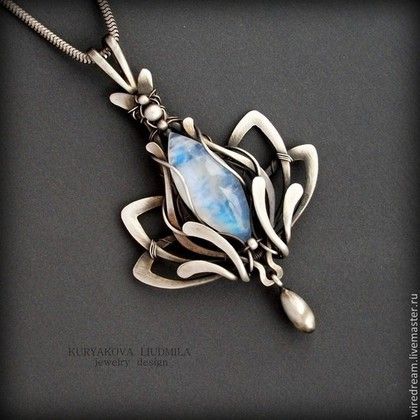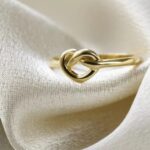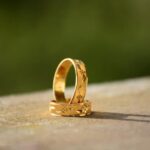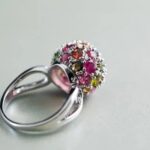What drives fine jewelry sales? Whether it’s the emotional connection, social media influence, or the allure of craftsmanship and quality, there are multiple factors that contribute to the thriving industry of fine jewelry. In this article, we will explore the various elements that drive consumer behavior and purchasing decisions in the world of luxury jewelry.
First, we will delve into the emotional connection that consumers have with fine jewelry. From sentimental value to the symbolism behind a piece, understanding this emotional allure is crucial in comprehending what motivates individuals to invest in luxury accessories.
Next, we will examine the impact of social media and celebrity endorsements on fine jewelry sales. In today’s age of influencer marketing and digital platforms, these external factors play a significant role in shaping consumer preferences and driving sales within the industry.
Lastly, we will analyze the role of craftsmanship and quality in driving fine jewelry sales. The meticulous attention to detail and superior artisanship are key selling points for consumers seeking timeless and enduring pieces. Understanding these various elements will provide valuable insights into what prompts individuals to make significant investments in fine jewelry.
The Influence of Social Media and Celebrity Endorsements on Fine Jewelry Sales
In today’s digital age, social media and celebrity endorsements play a significant role in driving fine jewelry sales. From Instagram posts featuring luxurious diamond rings to red carpet appearances adorned with statement necklaces, the influence of social media and celebrity culture cannot be understated when it comes to the allure of fine jewelry.
Social Media’s Impact on Consumer Behavior
The rise of social media platforms has revolutionized the way consumers discover, explore, and purchase fine jewelry. With the ability to showcase products through visually appealing images and engaging content, jewelry brands can reach a wider audience and create a sense of desirability among consumers. Platforms like Instagram, Pinterest, and Facebook have become virtual storefronts for luxury jewelry brands, allowing them to connect with potential customers on a more personal level.
The Power of Celebrity Endorsements
Celebrities have long been regarded as trendsetters in fashion, making their endorsements highly influential in driving sales within the fine jewelry industry. Whether it’s wearing custom-made pieces on the red carpet or collaborating with renowned jewelers to design exclusive collections, celebrities have the ability to shape consumer preferences and create aspirational appeal for specific jewelry brands.
The association of a well-known personality with a particular piece of fine jewelry can significantly elevate its perceived value and desirability among consumers.
The Future of Fine Jewelry Sales
As social media continues to evolve and celebrities remain in the spotlight, their influence on fine jewelry sales is expected to grow even further. Brands will need to adapt their marketing strategies to leverage these platforms effectively while also seeking out authentic partnerships with influential figures that align with their brand values. Ultimately, the integration of social media and celebrity endorsements will continue to drive consumer interest and shape the landscape of the fine jewelry market for years to come.
The Role of Craftsmanship and Quality in Driving Fine Jewelry Sales
Craftsmanship and quality play a significant role in driving fine jewelry sales. Consumers are willing to invest in pieces that are meticulously crafted with high-quality materials, as they perceive them as lasting value. Here are some key factors that emphasize the importance of craftsmanship and quality in driving fine jewelry sales:
1. Superior Materials: Fine jewelry is often made with precious metals such as gold, platinum, and silver, as well as precious gemstones like diamonds, sapphires, and rubies. The use of these superior materials adds a level of luxury and exclusivity that attracts potential buyers.
2. Attention to Detail: Craftsmanship in fine jewelry involves intricate designs, precise settings, and meticulous finishing. Consumers appreciate the artistry and skill that goes into creating these pieces, making them more inclined to make a purchase.
3. Longevity and Durability: Fine jewelry is often seen as an investment due to its longevity and durability. Customers are willing to pay a premium for pieces that are well-crafted and built to last for generations.
Purchasing fine jewelry is not just about owning a beautiful accessory; it’s about investing in an item that holds sentimental value and can be passed down through generations. Craftsmanship and quality contribute to the emotional connection consumers have with fine jewelry, which ultimately drives sales in this niche market.
Consumer Behavior
When it comes to consumer behavior and the psychology behind purchasing fine jewelry, there are various factors that come into play. From emotions to social influences, understanding the thought process behind buying luxury items can provide valuable insights for the industry.
The Emotional Connection
One of the key drivers of fine jewelry sales is the emotional connection that consumers have with these pieces. Whether it’s a symbol of love and commitment in the form of an engagement ring or a way to commemorate a special achievement, people often purchase fine jewelry as a way to express their emotions and create lasting memories. The sentimental value attached to these pieces plays a significant role in driving sales.
Perception of Value
Another aspect of consumer behavior when it comes to purchasing fine jewelry is the perception of value. Consumers often view luxury items as an investment or a reflection of their status and taste. Understanding this mindset can help businesses tailor their marketing strategies and products to meet the perceived value that customers seek when making such purchases.
The Role of Exclusivity
Additionally, the psychology behind purchasing fine jewelry is influenced by the desire for exclusivity. Many consumers are attracted to unique and limited-edition pieces, which contribute to their sense of individuality and status. This drives them to seek out high-end brands and one-of-a-kind designs, fueling demand within the market.
Understanding consumer behavior and the psychological factors that drive fine jewelry sales is essential for businesses within this industry. By tapping into the emotional connections, perceived value, and desire for exclusivity, companies can effectively target their marketing efforts and product offerings to attract and retain customers.
The Impact of Fashion Trends on Fine Jewelry Sales
Fashion trends play a significant role in driving sales in the fine jewelry industry. Consumers are often influenced by what is currently popular and trendy when it comes to their purchasing decisions, and this includes their choices in jewelry. Here are some ways in which fashion trends impact fine jewelry sales:
1. Trendy Designs: Fine jewelry designers often take inspiration from current fashion trends to create pieces that resonate with consumers. This could include incorporating popular motifs, colors, or styles into their designs to appeal to fashion-conscious buyers.
2. Statement Pieces: As fashion trends shift towards bold and statement-making accessories, there is an increased demand for unique and eye-catching fine jewelry pieces. This could include oversized earrings, chunky bracelets, or colorful gemstone necklaces that reflect the current fashion aesthetic.
3. Collaboration with Fashion Brands: Many fine jewelry brands collaborate with high-end fashion houses or designers to create exclusive collections that align with the latest runway looks. These collaborations generate excitement among consumers who are eager to own pieces that are on-trend and carry the prestige of both the jewelry brand and the fashion house.
It’s clear that staying attuned to fashion trends is essential for driving fine jewelry sales, as consumers seek out pieces that not only reflect their personal style but also align with what is currently en vogue. By keeping a finger on the pulse of the fashion industry, fine jewelry brands can position themselves as relevant and desirable within the ever-changing landscape of consumer preferences.
The Significance of Branding and Marketing in the Fine Jewelry Industry
When it comes to understanding what drives fine jewelry sales, branding and marketing play a significant role in shaping consumer perception and purchasing behavior. In the world of luxury goods, the reputation and image of a brand are often just as important as the products themselves. High-end jewelry buyers are not only looking for beautifully crafted pieces, but also for an emotional connection and a sense of exclusivity that comes with owning a certain brand.
One key aspect of branding in the fine jewelry industry is storytelling. Brands often leverage their heritage, craftsmanship, and unique design philosophies to create an emotional appeal that resonates with consumers. Successful marketing campaigns further amplify this emotional connection by portraying jewelry as more than just an accessory, but rather as a symbol of love, status, or personal achievement. By creating aspirational and emotional narratives around their products, fine jewelry brands are able to drive demand and justify premium pricing.
In addition to storytelling, strategic marketing efforts also play a crucial role in driving fine jewelry sales. From print advertisements in high-end fashion magazines to collaborations with influencers on social media platforms, brands invest heavily in reaching their target audience through various channels. Social media has become particularly influential in shaping consumer preferences and purchasing decisions within the fine jewelry market.
Through visually appealing content and engaging narratives, brands can effectively connect with potential buyers on platforms like Instagram and Pinterest. This direct-to-consumer approach has proven to be highly effective in driving brand awareness and ultimately increasing sales.
| Aspect | Importance |
|---|---|
| Storytelling | Creates emotional appeal |
| Strategic Marketing | Reaches target audience effectively |
By implementing compelling branding strategies and targeted marketing campaigns, fine jewelry brands can tap into the desires and aspirations of consumers, ultimately driving sales and maintaining strong brand loyalty despite economic fluctuations or changes in fashion trends.
The Role of Special Occasions and Gift Giving in Fine Jewelry Sales
When it comes to what drives fine jewelry sales, the role of special occasions and gift giving cannot be overstated. Major life events such as engagements, weddings, anniversaries, and milestone birthdays often prompt consumers to purchase fine jewelry as a way to commemorate and celebrate these special moments. According to industry data, the demand for engagement rings alone contributes significantly to the overall sales of fine jewelry each year.
In addition to personal milestones, holidays such as Valentine’s Day, Mother’s Day, and Christmas also drive a surge in fine jewelry sales. During these times, many consumers are in search of meaningful gifts that will be cherished for years to come. The tradition of giving fine jewelry as a symbol of love and affection has contributed to the enduring popularity of these items as gifts for special occasions.
The emotional significance attached to both giving and receiving fine jewelry plays a key role in driving sales within this industry. Whether it’s a romantic gesture or a thoughtful token of appreciation, the sentimental value associated with fine jewelry makes it a timeless choice for honoring special moments and relationships.
| Special Occasion | Percentage Increase in Fine Jewelry Sales |
|---|---|
| Valentine’s Day | 30% |
| Engagements/Weddings | 50% |
| Mother’s Day | 25% |
The Influence of Economic Factors on Fine Jewelry Sales
In conclusion, there are several key factors that contribute to driving sales in the fine jewelry industry. From the emotional connection that individuals have with these pieces to the influence of social media and celebrity endorsements, it is clear that consumer behavior plays a significant role in shaping the market. Additionally, the role of craftsmanship and quality cannot be understated, as consumers are often willing to invest in pieces that they perceive as valuable and long-lasting.
Moreover, fashion trends also play a crucial role in fine jewelry sales, as individuals often seek to align their personal style with current trends. This highlights the need for brands to stay attuned to the ever-changing landscape of fashion. Furthermore, branding and marketing efforts are essential in establishing a strong presence within the industry and capturing the attention of potential consumers.
Lastly, economic factors such as luxury spending and market trends also have a substantial impact on fine jewelry sales. It is important for businesses within this sector to closely monitor economic conditions and adjust their strategies accordingly. Overall, it is evident that a combination of emotional appeal, consumer behavior understanding, quality products, fashion relevance, effective branding/marketing efforts, and economic awareness all contribute significantly to driving sales in the fine jewelry industry.
Frequently Asked Questions
What Are the Key Drivers of the Jewelry Industry?
The key drivers of the jewelry industry include changing fashion trends, shifting consumer preferences, and the growing popularity of online shopping. As fashion evolves, so do the styles and designs of jewelry, driving demand for new and unique pieces. In addition, consumers are increasingly valuing ethically-sourced materials and sustainable practices in the jewelry industry, influencing purchasing decisions.
Why Do People Buy Fine Jewelry?
People buy fine jewelry for a variety of reasons, including as a symbol of love and commitment (such as engagement rings and wedding bands), as a form of self-expression and individuality, or as an investment.
Fine jewelry is often associated with special occasions and milestones in life, making it a popular choice for gifts to mark significant events such as birthdays, anniversaries, or achievements.
What Do Customers Look for in Jewelry?
When shopping for jewelry, customers look for several key factors including the quality and authenticity of the materials used (such as precious metals and gemstones), unique designs that reflect their personal style, craftsmanship and attention to detail in the piece, as well as value for their money. Additionally, customers may also consider ethical considerations such as sustainable sourcing practices and supporting artisanal craftsmanship.
Overall, customers seek jewelry that is not only beautiful but also meaningful to them on a personal level.

Welcome to my jewelry blog! My name is Sarah and I am the owner of this blog.
I love making jewelry and sharing my creations with others.
So whether you’re someone who loves wearing jewelry yourself or simply enjoys learning about it, be sure to check out my blog for insightful posts on everything related to this exciting topic!





